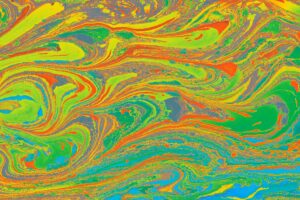Psychedelics have often been at the base of mystical experiences, medical procedures, and crucial cultural rites throughout history. In this journey, we delve into the chronicles of psychedelics to explore their origins and historical contexts, shedding light on their intriguing cultural significance across various ancient civilizations.
Human interaction with psychedelics dates back to prehistoric times, as deep as the Paleolithic Age, shown by psychedelic trail markers like cave paintings and petroglyphs. These artistic representations, most notably in the Sahara Desert dating around 9000 to 7000 BC, depict ancient psychedelic rituals involving mushrooms – a clear testament to the early indigenous use of these potent substances.
Psychoactive compounds have long been central to traditional shamanism and sacred rituals. Many shamanic cultures hold a deep respect for plant-based psychedelics, often terming them as “Plant-Teachers or “Spirit-Plants,” signifying their medicinal, spiritual, and instructive roles. To cite a classic instance, Ayahuasca, a potent psychoactive brew has been integral to the spiritual practices of Amazonian tribes. Traditional shamanism revolves around the idea that these psychedelic substances serve as portals to the spirit world, facilitating transcendent experiences.
Numerous ancient civilizations incorporated psychedelics into their daily lives in unique manners. The Classic Mayans, for instance, regaled a range of psychedelic substances. They celebrated the toad as a sacred animal, its skin secretion, which induces powerful hallucinogenic experiences upon ingestion, is illustrated in Mayan art. The psychoactive Amanita muscaria, often recognized as the ‘fly agaric’ mushroom, held a central spot in Siberian shamanic practices. Undeniably, the cultural significance of such psychedelics was monumental in laying the groundwork of these indigenous societies.
Unraveling the indigenous context further, we stumble upon the San Pedro cactus (Echinopsis pachanoi), one of the oldest known psychedelic plants in the South American Andes. Archaeologists have discovered it in burial sites dating back to 2200 BC. Traditional Andean medicine revered this plant for its healing properties and included it as a crucial component in religious ceremonies and psychedelic rituals.
Psychedelics have also played a pivotal role in ancient Greek civilization. The infamous Eleusinian Mysteries, annual initiation ceremonies for the cult of Demeter and Persephone held at Eleusis near Athens, allegedly involved the consumption of a psychedelic brew named Kykeon. There’s substantial historical context suggesting that this brew allowed the participants to experience profound transformational experiences.
Presenting yet another intriguing facet of psychedelic history, the African Iboga plant and its active compound Ibogaine have been entrenched in the Bwiti shamanistic practices of Gabon, Cameroon, and the Republic of Congo. Places of worship often feature extensive, intricate root-bark shavings from the Iboga plant, which is highly revered for its curative and visionary potential.
Scientific exploration of psychedelics emerged in the modern era, with Sigmund Freud’s inclusion of cocaine in his psychoanalytic toolkit and Albert Hoffman’s discovery of LSD’s psychoactive properties in 1943. Today, this knowledge of traditional and ancient psychedelics fuels contemporary research into the potential of these substances for therapeutic applications.
In the collective human journey, plant-based psychedelics have served as powerful tools, offering therapeutic benefits, religious experiences, and deep cultural insights. Looking back at this rich history, we can appreciate the profound role these substances played across cultures as vital tools for exploration and healing.
In sum, to comprehend psychedelics fully, it’s essential to respect their historical and indigenous roots. From the caverns of prehistoric shamans to modern neuroscience laboratories, the journey of psychedelics provides an unparalleled insight into the human quest for knowledge and understanding of self and the cosmos.
Sources:
1. Erowid
2. Britannica
3. National Geographic
4. Ancient Origins




